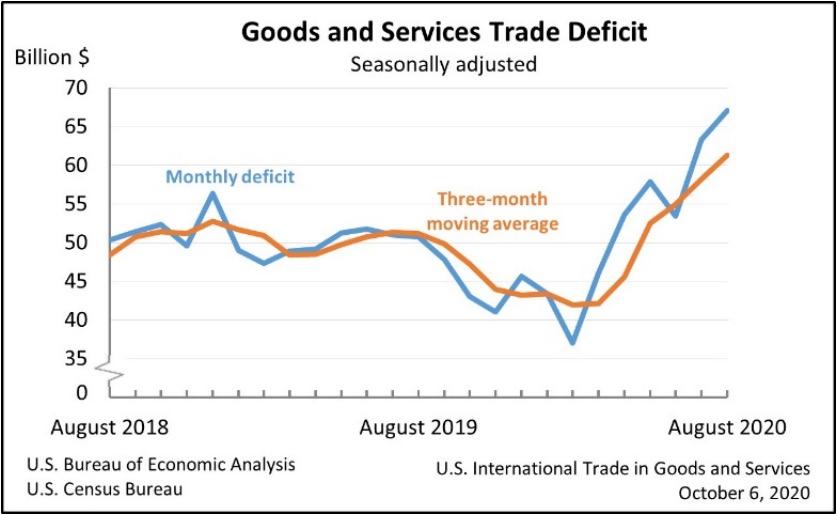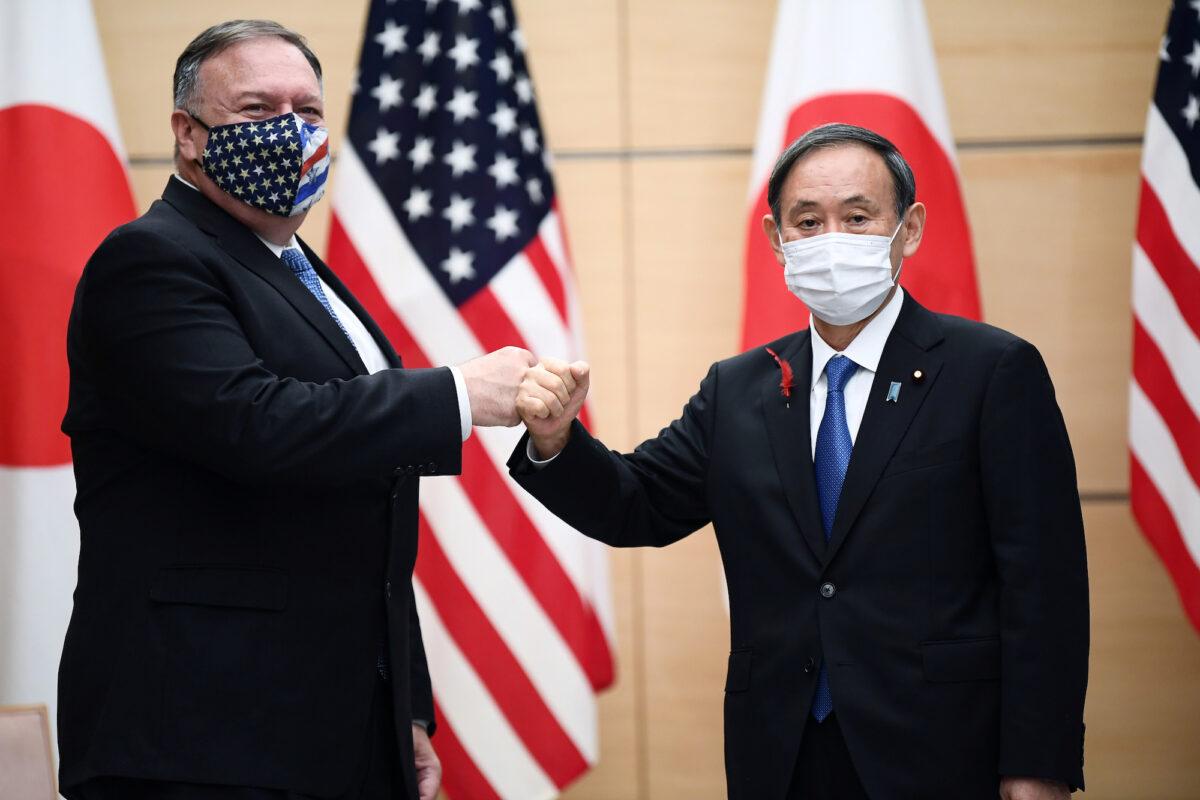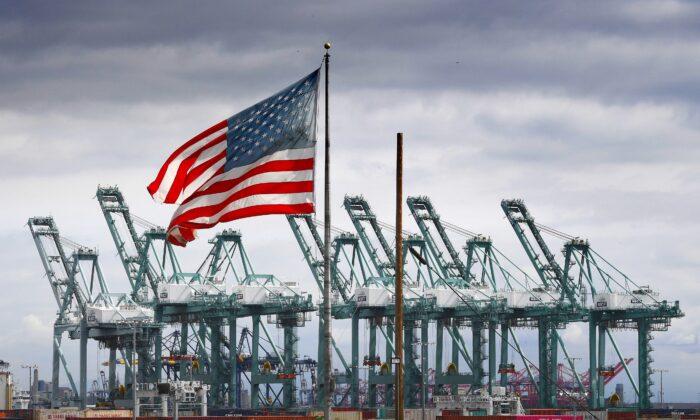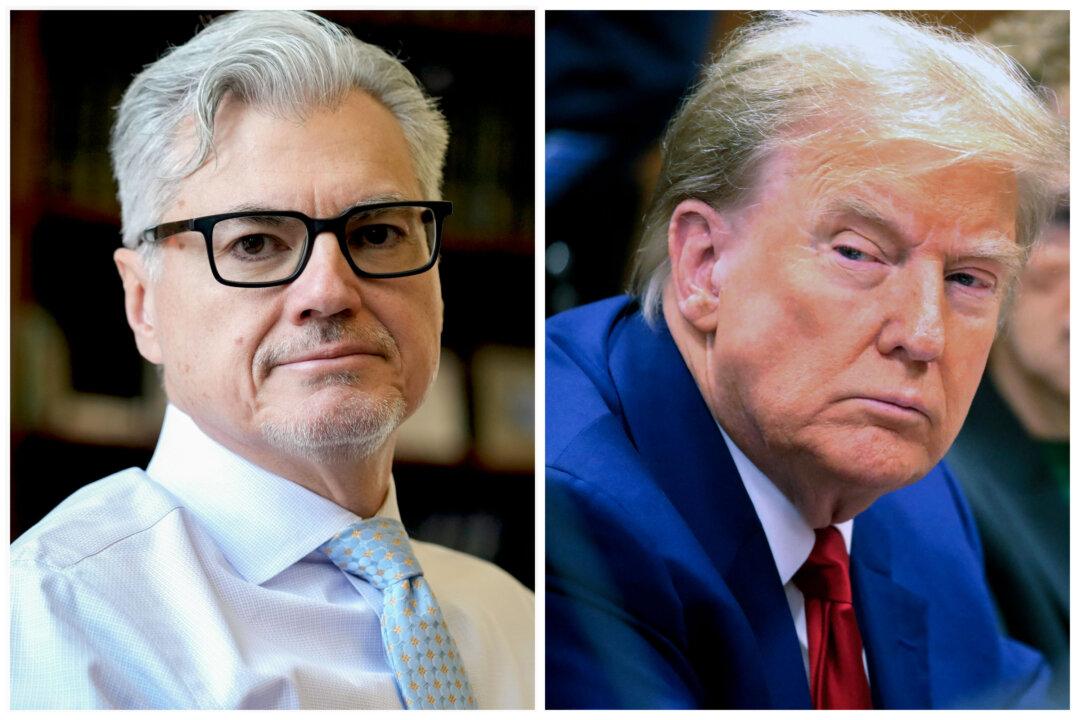The U.S. trade deficit jumped in August to its highest level in 14 years as imports climbed more than exports, with the deficit in goods hitting its highest level on record.
Overall imports of both goods and services increased by $7.4 billion to $239 billion, while exports grew $3.6 billion to $171.9 billion.

The rise in the trade deficit reflects a simultaneous jump in the goods deficit and a drop in the services surplus. The services surplus fell by $700 million in August to $16.8 billion, the lowest since January 2012.
The goods deficit in August, at $83.9 billion, was the highest on record. August imports of foods, feeds, and beverages ($13.5 billion), imports of non-petroleum products ($192.6 billion), and imports of consumer goods ($57.9 billion) each hit record highs. The August deficit with Mexico reached $12.8 billion, the highest level on record.
The closely watched trade deficit with China dropped by $1.9 billion to $26.4 billion in August. Exports to China in August, at $11 billion, were the highest since March 2018.
A smaller trade deficit contributed to a higher gross domestic product (GDP) over the last three quarters, as GDP increases when the trade deficit falls or when a trade surplus grows. The rise in the U.S. trade deficit is therefore likely to be a drag on GDP numbers in the third quarter.
Secretary of State Mike Pompeo visited Japan on Tuesday to rally support from Washington’s closest allies in Asia, calling for deeper collaboration with Japan, India, and Australia as a bulwark against China’s regional ambitions.

Pompeo spoke ahead of the start of a meeting of the Quad grouping of the four nations’ foreign ministers, denouncing China’s communist leadership for their tactics in the region.
“As partners in this Quad, it is more critical now than ever that we collaborate to protect our people and partners from the CCP’s exploitation, corruption, and coercion,” Pompeo said.
“We see it in the South and East China Seas, the Mekong, the Himalayas, the Taiwan Strait,” Pompeo added.
One issue that is vexing for Washington’s Asian allies is their dependence on China for trade. China was the top destination for Australian exports in 2019, the No. 2 destination for Japanese exports, and the No. 3 destination for Indian exports, according to IMF direction of trade statistics compiled by Refinitiv.
The United States and China have been at loggerheads over a range of issues, including Beijing’s handling of the CCP virus outbreak, its imposition of a new security law in Hong Kong, and military ambitions in the South China Sea.





